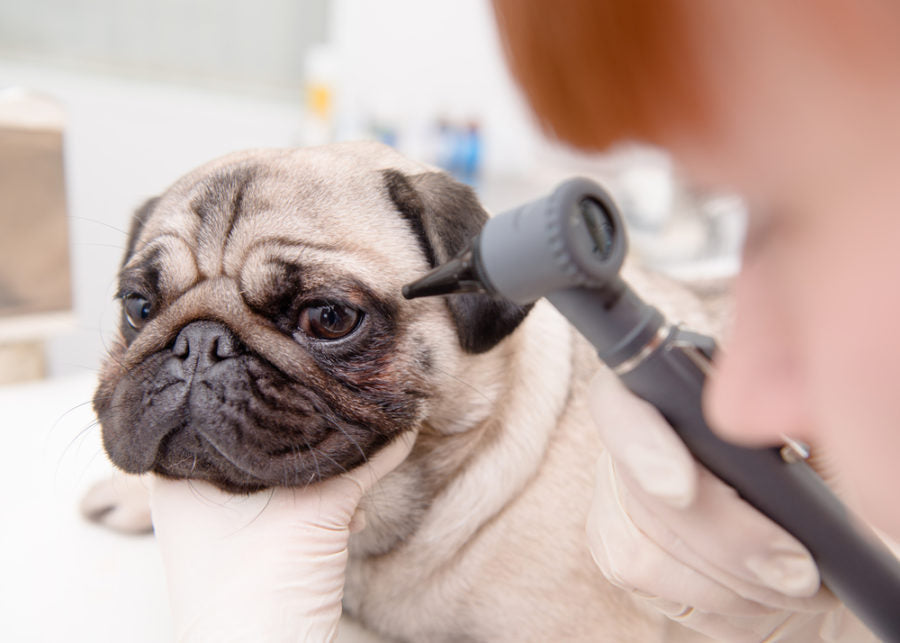
An overview of tear function and why it’s a crucial component of ocular hygiene in your canine and feline patients.
The quality and quantity of tears are vitally important for ocular health. Without them, the eye would not get any oxygen or nutrients, and as with all other living tissues, the corneal cells would die.
Dry Eye
Dry Eye, also known as keratoconjunctivitis sicca (KCS) occurs when tears cease to be produced in sufficient amounts, or the quality of the tear film diminishes. A cornea deprived of oxygen and nutrients may become irritated and infected, which can lead to corneal damage and blindness. Unlike other body tissues, the cornea has no blood vessels to bring oxygen to cells. Blood vessels would compromise the cornea’s transparency, affecting eyesight. That is why the cornea must rely on tears to survive.
Diagnosis
A quick and easy diagnostic tool called the I-TEAR® TEST measures tear volume to help diagnose KCS. This five-second, non-invasive test strip should be placed on the tear meniscus. By capillary action, the tear will go up the micropipette in the strip, allowing the user to read the value. A reading of eight and over is normal, whereas anything under eight is deficient.
Signs, symptoms and causes
Signs and symptoms that you may recognize in a pet with KCS are red eyes, frequent pawing of the eye, watery eyes, tearing with staining on the fur around the eyes, accumulation of secretions and/or debris on eye lashes, and evidence of pain or soreness near the animal’s eyes.
KCS can be caused by allergies, infections, immune reactions, hormonal deficiencies, injuries, abnormal growths, nerve damage, environmental factors, and genetic predisposition. Certain medications can also decrease tear production or interfere with normal distribution of tears. Identifying and treating the underlying cause is an important step in the treatment of this disorder.
Treatment
As mentioned, the eye is covered by a thin layer of tears, called the tear film, which consists of three layers: the lipid, aqueous and mucin layers, as shown in the image below. All three layers must be present and in balanced amounts to protect the cornea.

Figure 1: Tear film layers in the dog’s eye
A lubricating drop, such as I-DROP® VET GEL, can be used to treat KCS. These artificial tears contains both HA and glycerin, which will help stabilize all three layers of the tear film (see Figure 1). HA is a hydrating ingredient that can retain 1000x its weight in water. This molecule also reduces many dry eye symptoms, boasts anti-inflammatory properties, promotes wound healing, and mimics the behavior of a healthy tear film. Both glycerin and HA help to stabilize the tear film, therefore reducing tear evaporation and ensuring long-lasting dry eye relief.
In addition to the lubricating drops, reducing inflammation around the eye will ensure optimal results. A product called I-LID ‘N LASH® VET works to remove secretions and reduce the bio-burden while having an added advantage of effectively preventing tear stains and odors. Good ocular hygiene, i.e., frequent cleansing of discharge, is also essential to minimize the accumulation of debris.
What about prescription medication?
Though cyclosporine and tacrolimus are proven effective in early stages of KCS, they are not the best option for dogs with long-term or chronic KCS and are contraindicated for cats and other species. They are expensive, known to blur vision, burn and sting.
I-DROP® VET GEL is a safe alternative for pets that don’t respond well to these medications or for pet parents that would prefer a more cost-effective option.
To see our original post, please visit: https://ivcjournal.com/tear-production-ocular-hygiene-dogs-cats/